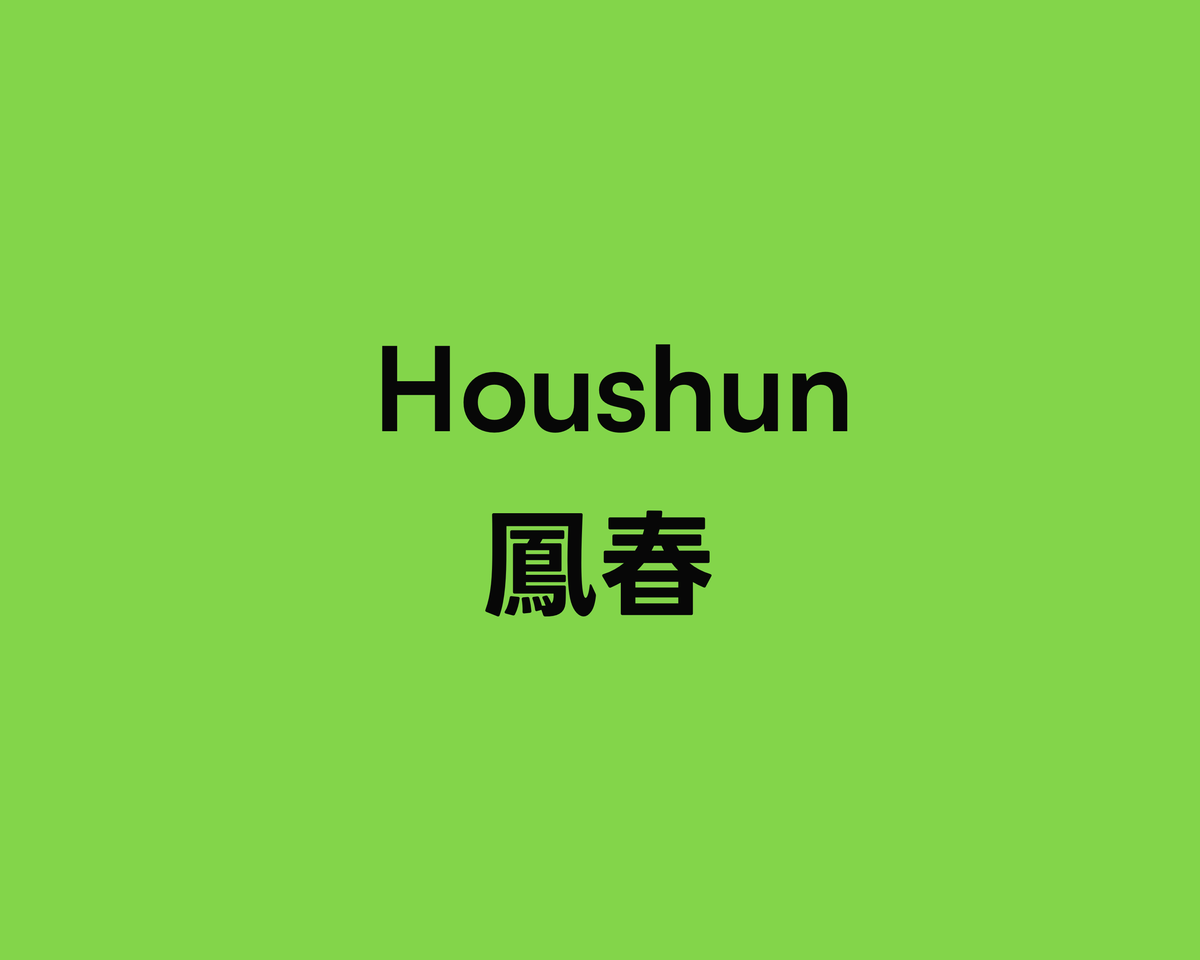Houshun 鳳春
The Hoshun cultivar suitable for Gyokuro was selected in 1977 from natural crosses of the Samidori cultivar in 1975 and registered in 2006. Breeding of the cultivar was done at ...

Houshun is a very early-budding Japanese tea cultivar developed for Gyokuro production, selected in 1977 from natural crosses of the Samidori cultivar and registered in 2006 by the Kyoto Prefectural Tea Research Centre. This cultivar buds approximately 7 days earlier than Samidori and 10 days earlier than Yabukita, potentially commanding higher early-market prices. Houshun produces high-quality Gyokuro with strong aroma, and freshness, though it requires careful frost protection due to its early budding period.
Lineage
- Selected from a natural crossing from a seed of Samidori♀[1]

History
The Hoshun cultivar, suitable for Gyokuro, was selected in 1977 from a series of natural crosses of the Samidori cultivar from 1975. It was registered in 2006. The breeding of the cultivar was carried out at the Kyoto prefectural tea research centre alongside Tenmyo, another cultivar selected and registered in the same years. Both Tenmyo and Hoshun were developed from natural crosses of Samidori.
Samidori itself is an unregistered cultivar selected from landrace seed grown in Kyoto prefecture tea bushes by Masajiro Koyama[2]. The cultivar was developed at the Kyoto Prefectural Tea Research Centre. It should not be confused with similarly sounding but different cultivars, such as Saemidori, Sakimidori, or Sainomidori.
Although registered on 4th February 2004, the strain was not finally published and registered until 14th December 2006. During testing, its strain number was 53-7, and its registration number is 14534. The registration period for new cultivars is increasing compared to older cultivars, which were typically registered a couple of months after application. For more information on the registration flow, including registration for vegetables, cereals, and other agricultural products, refer to the document in the references section.
The Kyoto Prefectural Tea Research Centre emphasises its work in tea crossbreeding and research to support the Uji tea brand, one of the most recognisable at both national and international levels. Its research primarily focuses on shaded teas, such as Tencha, the precursor to Matcha and Gyokuro, two of the most recognisable teas produced in the prefecture. The centre has developed numerous cultivars suited for shaded tea production and improved processing methods. While the centre has developed many cultivars through crossbreeding, many have not been registered but are still used within the prefecture. This may be one reason why these cultivars are predominantly found in Kyoto Prefecture and not in other prefectures. Some cultivars developed in this research centre include Asahi, Gokou, Ujimidori, Ujihikari, Samidori, and Tenmyo. There are others even less known as well.
Characteristics
Houshun is a Gyokuro cultivar with a very early budding and harvesting period. This allows for a better distribution of the workload, making harvesting and processing more efficient when cultivating alongside other medium and late cultivars. As an early cultivar, Houshun can also arrive on the market earlier, potentially commanding a higher price. However, with the emergence of other early cultivars competing for those coveted early market spots, securing a higher price is not solely dependent on the timing of harvest. The quality of the tea now also plays a crucial role in determining its market value.
Houshun is a very early budding cultivar, around seven days earlier than Samidori and ten days earlier than Yabukita. On average, it is harvested four days earlier than Yabukita. Both handpicking and mechanical harvesting yield higher results than Samidori, with 110% and 117% respectively, according to the comparison data. The hand-picking data is from bushes grown in the Shizen-shitate[3]. A common style of cultivation for Gyokuro and Tencha, letting the bush grow naturally upwards under a shelf-style shading structure.
The Houshun bush is relatively upright, with many branches and strong root strength. Its new leaves are green, slightly larger and thicker than Samidori leaves. The first harvest is as high as Samidori and has more buds. Houshun has a strong aroma, freshness, and other desirable aftertaste aroma for Gyokuro production. Its leaf lustre is light-coloured the leaves are generally narrow, and its curly shape makes it easy to roll. The chemical components analysis reported amino acids and tannins amounts considered medium in concentration.
Since the budding period is early, thorough frost protection is necessary. When grown in the Une-shitate[4] style, the characteristic arc-shaped pattern, the leaves tend to become a little smaller. Good trimming techniques and fertilisation can help to prevent that. Disease resistance is strong against ring spot disease and moderate against anthracnose.
References
京都府. ‘新品種’鳳春(ほうしゅん)、展茗(てんみょう)’について’. 京都府, https://www.pref.kyoto.jp/chaken/seika_hou-ten.html. Accessed 24 Mar. 2024.
公益社団法人 静岡県茶業会議所. 茶の品種. 2019.
品種登録迅速化総合電子化システム. https://www.hinshu2.maff.go.jp/vips/cmm/apCMM112.aspx?TOUROKU_NO=14534&LANGUAGE=Japanese. Accessed 19 Mar. 2024.
Guide to cultivar registration MAFF https://www.maff.go.jp/j/shokusan/hinshu/info/tebiki/toroku_tebiki.pdf
Last update: 2025 August 23rd
Added footnotes, revised overall text structure
